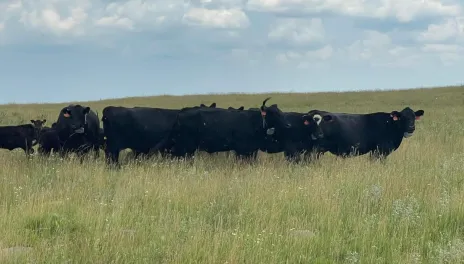Integrating virtual fence into grazing systems in North Dakota
Virtual fence is a relatively new technology that has the potential to improve grazing management without physical fences. Livestock wear collars that communicate animal location in relationship to a virtual fence boundary via radio and/or cellular tower to a web- or phone-based application. The animal receives audio and electrical cues depending on their location in relationship to the virtual fence boundary.
For the last year researchers at NDSU have been evaluating the use of virtual fence in grazing systems. We have been evaluating the use of this technology to manage livestock grazing both rangeland and cropland to enhance grazing efficiency and livestock production.
One of the greatest concerns from producers is the effectiveness of virtual fence in keeping animals in or out of a designated area. Across both studies we have observed 92% containment of grazing animals to designated areas. This is consistent with research being conducted in other areas the United States and Canada, which report 90% or greater containment.
The initial findings of our research indicate that virtual fence is effective in managing grazing animals, while providing increased flexibility in management. Virtual fences can quickly be moved or adjusted to better meet management goals of improving grazing distribution, increasing harvest efficiency and enhancing wildlife habitat. However, adapting this technology is not without challenges. The cost is likely to be a barrier to many producers. Additionally, there is the time to learn how to effectively use the technology. It is important for producers to understand how this technology can be integrated into their production system to better enable them to meet their individual management goals.
By Dr. Miranda Meehan
Associate Professor & Livestock Environmental Stewardship Specialist
